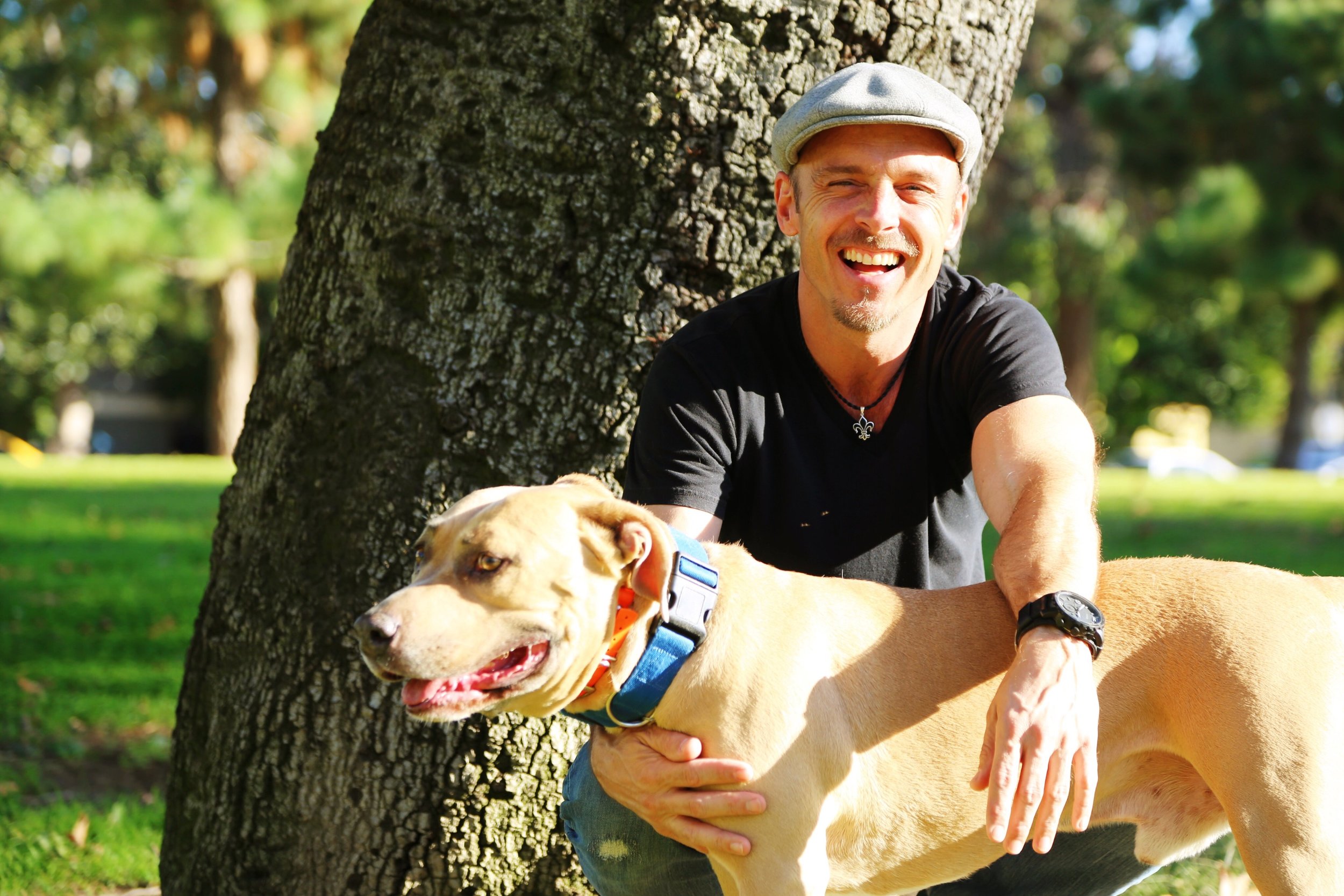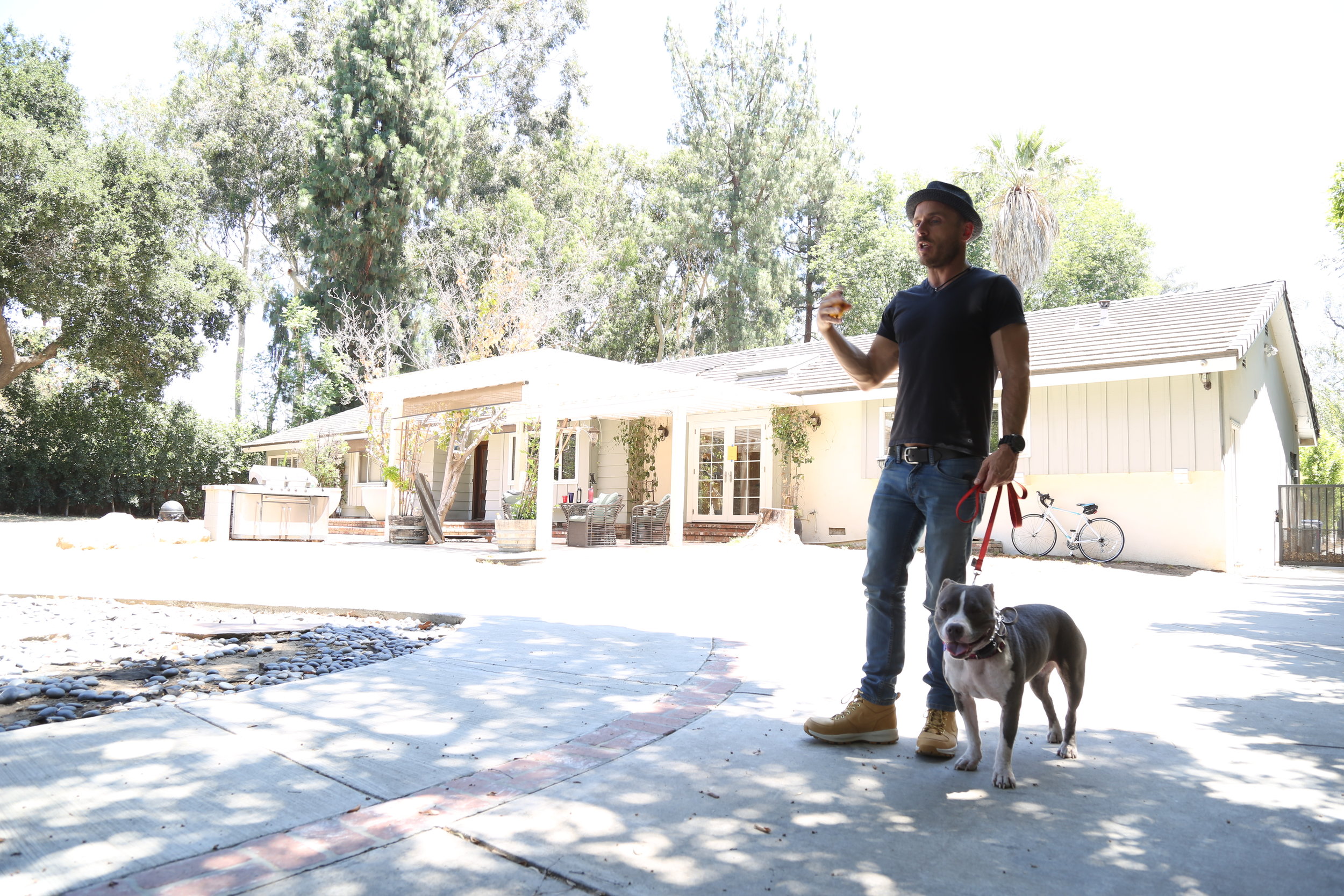 By Sean O'Shea1) Thou shall only pet, soothe, and share soft energy with a dog when they are in a healthy and positive state of mind. We learned in The Ten Commandments Of Dog Training (Don't!) that sharing soft energy or soothing interactions with our dogs when they're in an unhealthy state will likely reinforce and strengthen the unwanted behavior. Remember this phrase to help you:What you pet is what you get!So be mindful to use your interactions to cultivate positive mental states rather than negative.Instead of coddling and soothing your dog at the first sign of distress, let's learn to ignore minor stress and moments of uncertainty. Trust that your dog is a creature designed to overcome challenges, and that she is much more resilient than you give her credit for. Like kids, your dog will take cues from your level of reaction as a guide for how strongly they should feel and be concerned about situations.For more serious behavior issues, embark on a balanced obedience/training program which will instill confidence and growth. With the right training approach, even serious issues can be successfully tackled. Check out my basic free how-to videos HERE or my Foundation DVD HERE.So think of it this way: if there's a behavior that you would like your dog to do less of, don't do something that will increase the frequency of the behavior (petting, soothing, etc), and instead do something that will reduce its frequency (ignoring, correcting, or training).2) Thou shall keep your on-leash dog safe by not allowing interactions with unknown dogs, who are also on-leash. We learned in the previous post that dogs meeting on-leash tend to be in a compromised state, either due to stress from excitement and frustration of anticipating a meeting; or stress from nervousness and insecurity from trying to avoid a meeting (and, of course, some dogs are conflicted and vacillate between both). Either way we know that even really social dogs may end up in a negative interaction when on-leash due to these factors.So what's the right approach to dogs meeting on-leash?Well, in my opinion, you shouldn't let it happen. I just create a simple rule for my clients that they aren't to let their dogs interact on-leash with other dogs on the walk. The only exception to this is if the other dog is a well-known friend to your dog, you're certain they get on great and have no issues interacting - and your dog doesn't act like a knucklehead dragging you across the street to meet his buddy! For all other situations, I'd suggest simply deciding to avoid the possible drama and trauma of on-leash greetings, and use my favorite line to keep other owners and dogs at bay:"Sorry, my dog is in training." (It works every time!)Most of the motivation behind our desire to have on-leash meetings stem from our belief that our dogs need to meet every dog they see. That in order to be fulfilled and happy, they need to have interaction with all the neighborhood dogs. Believing this to be the case, and, of course, wanting our dogs to be happy (and not wanting to be a social outcast who says 'no' to other owners), we allow them to drag us over to random dogs at their discretion and peril. But the reality is that your dog needs structure and guidance from you on the walks much more than he needs to meet every dog in order to be happy and balanced - not to mention, safe.Remember that it's our job to advocate for our dogs and to keep them safe, sound and balanced when on-leash and off. Simply put, your dog needs you to make the smart decisions and understand what's best for him when it comes to safely navigating through our world.3) Thou shall ensure that your dog waits patiently at thresholds, heels politely, and obeys the rules of the structured walk. Previously we learned that allowing these behaviors oftentimes creates relationship issues, teaches your dog to ignore you, trains pushiness, and often creates stressed out little monsters. So let's not go there!Instead, focus on creating respectful, calm behavior at thresholds with your dog stopping and waiting for permission from you to move through. This simple exercise can dramatically change your dog's behavior on the walk and elsewhere. The trick is to not use a tense leash to hold your dog back from moving through the threshold, but, instead, use a quick pop on the leash if your dog should try to move past you. You can also ask your dog to sit first, but the way I do it, without a verbal command, actually challenges the dog more and encourages better focus and more respect.Check out my Threshold video below for step-by-step instructions on how to create better behavior and a better state of mind at thresholds:THRESHOLDS VIDEOSame goes for the walk itself. Many owners use constant pressure (holding the dog back with a tense leash) in an attempt to control the dog. This only makes for a tense, frustrated, struggle for both of you. What we're looking for is a short, but not tight, leash, that always has a little slack in it, except for the moments when you correct with an instantaneous leash pop and release. These leash pops are conversations to your dog that communicate where your dog should be position-wise.Check out my Walk video below for step-by-step instructions on how to create a calm, structured walk:WALK VIDEOAlso, see my post called Why Heel Matters.When done correctly, the structured walk (with relaxed leash and using leash pops to communicate) will keep your dog from pulling, keep him/her calm, and will prevent many of the outbursts and reactivity (barking and lunging). These outbursts typically come from dogs being overly-stressed due to straining, frustration, and feeling disconnected from you. As for the actual rules of the structured walk, don't allow your dog to pull, sniff, mark, or target other dogs. Your dog needs structure and rules from you in order to feel comfortable, respectful, and safe on the walk. You can allow your dog to have potty and sniff time on your release, not when your dog simply decides to pull you to something of interest.Owners often struggle with feeling bad about asking their dogs to walk in a more structured fashion. They feel they're denying their dogs the fun and joy of exploring and being dogs, but the reality is that your dog will actually enjoy the walk much more if he's calm, relaxed, and stress free.We recommend a 90/10 ratio of structure to freedom. Shoot for a 90% structured walk with your dog walking at your side with zero pulling and then 10% of freedom, potty time, and/or sniffing, spread out over the duration of the walk, as a reward for great behavior.If you will set the tone from the beginning of the walk at the thresholds, and then create a respectful, calm, structured walk, you will find your dog becoming a much more relaxed and comfortable dog, who looks to you for information and guidance, and is far better behaved in all other aspects of life, as well.4) Thou shall always supervise and direct the interactions of dogs who are new to each other. In the previous post, we learned that allowing dogs to work their relationships issues out on their own can be a recipe for disaster. Because there are so many variables and dynamics at play when dogs are being introduced to each other - territorial issues, excitement issues, competition issues, bad manners, trust issues, owner nervousness, etc - it's prime time for dogs to make bad choices and create bad blood right from the get-go.So, instead of leaving our dogs to sort things out when the deck is stacked against them, let's help set them up for success through some simple structure, rules, and guidance. If we will take the time to move slowly, be aware, and to create a calm and relaxed state where both dogs can comfortably get familiar with each other, and over the initial hump of newness, novelty, stress and pressure, we have a great chance to create a harmonious, safe, and happy relationship.Click HERE to read my post that gives step-by-step details of how to create this harmonious introduction.5) Thou shall utilize the dog park at your (and your dog's) own risk. We learned in the last post that while dog parks are a really cool idea in theory, unfortunately, the reality can be something very different. Many dogs develop trust issues with other dogs after having been bullied or attacked at the dog park, or off-leash, and this often spills over into creating dog reactivity and dog aggression issues down the line.Personally, I don't ever go into dog parks, and I recommend my clients avoid them as well. My suggestion is to find safe, balanced dogs that your dog can play with - create play dates with friends or neighbors who have good dogs, or take hikes or other excursions off-leash in a safe environment. Treadmills can be a great addition for helping higher energy dogs to expend some of that energy. Bike rides or jogging with your dogs are also awesome activities.If, for some reason, you're unable to utilize these other options and feel the dog park is a necessity for you and your dog, then here are a few tips to think about:
By Sean O'Shea1) Thou shall only pet, soothe, and share soft energy with a dog when they are in a healthy and positive state of mind. We learned in The Ten Commandments Of Dog Training (Don't!) that sharing soft energy or soothing interactions with our dogs when they're in an unhealthy state will likely reinforce and strengthen the unwanted behavior. Remember this phrase to help you:What you pet is what you get!So be mindful to use your interactions to cultivate positive mental states rather than negative.Instead of coddling and soothing your dog at the first sign of distress, let's learn to ignore minor stress and moments of uncertainty. Trust that your dog is a creature designed to overcome challenges, and that she is much more resilient than you give her credit for. Like kids, your dog will take cues from your level of reaction as a guide for how strongly they should feel and be concerned about situations.For more serious behavior issues, embark on a balanced obedience/training program which will instill confidence and growth. With the right training approach, even serious issues can be successfully tackled. Check out my basic free how-to videos HERE or my Foundation DVD HERE.So think of it this way: if there's a behavior that you would like your dog to do less of, don't do something that will increase the frequency of the behavior (petting, soothing, etc), and instead do something that will reduce its frequency (ignoring, correcting, or training).2) Thou shall keep your on-leash dog safe by not allowing interactions with unknown dogs, who are also on-leash. We learned in the previous post that dogs meeting on-leash tend to be in a compromised state, either due to stress from excitement and frustration of anticipating a meeting; or stress from nervousness and insecurity from trying to avoid a meeting (and, of course, some dogs are conflicted and vacillate between both). Either way we know that even really social dogs may end up in a negative interaction when on-leash due to these factors.So what's the right approach to dogs meeting on-leash?Well, in my opinion, you shouldn't let it happen. I just create a simple rule for my clients that they aren't to let their dogs interact on-leash with other dogs on the walk. The only exception to this is if the other dog is a well-known friend to your dog, you're certain they get on great and have no issues interacting - and your dog doesn't act like a knucklehead dragging you across the street to meet his buddy! For all other situations, I'd suggest simply deciding to avoid the possible drama and trauma of on-leash greetings, and use my favorite line to keep other owners and dogs at bay:"Sorry, my dog is in training." (It works every time!)Most of the motivation behind our desire to have on-leash meetings stem from our belief that our dogs need to meet every dog they see. That in order to be fulfilled and happy, they need to have interaction with all the neighborhood dogs. Believing this to be the case, and, of course, wanting our dogs to be happy (and not wanting to be a social outcast who says 'no' to other owners), we allow them to drag us over to random dogs at their discretion and peril. But the reality is that your dog needs structure and guidance from you on the walks much more than he needs to meet every dog in order to be happy and balanced - not to mention, safe.Remember that it's our job to advocate for our dogs and to keep them safe, sound and balanced when on-leash and off. Simply put, your dog needs you to make the smart decisions and understand what's best for him when it comes to safely navigating through our world.3) Thou shall ensure that your dog waits patiently at thresholds, heels politely, and obeys the rules of the structured walk. Previously we learned that allowing these behaviors oftentimes creates relationship issues, teaches your dog to ignore you, trains pushiness, and often creates stressed out little monsters. So let's not go there!Instead, focus on creating respectful, calm behavior at thresholds with your dog stopping and waiting for permission from you to move through. This simple exercise can dramatically change your dog's behavior on the walk and elsewhere. The trick is to not use a tense leash to hold your dog back from moving through the threshold, but, instead, use a quick pop on the leash if your dog should try to move past you. You can also ask your dog to sit first, but the way I do it, without a verbal command, actually challenges the dog more and encourages better focus and more respect.Check out my Threshold video below for step-by-step instructions on how to create better behavior and a better state of mind at thresholds:THRESHOLDS VIDEOSame goes for the walk itself. Many owners use constant pressure (holding the dog back with a tense leash) in an attempt to control the dog. This only makes for a tense, frustrated, struggle for both of you. What we're looking for is a short, but not tight, leash, that always has a little slack in it, except for the moments when you correct with an instantaneous leash pop and release. These leash pops are conversations to your dog that communicate where your dog should be position-wise.Check out my Walk video below for step-by-step instructions on how to create a calm, structured walk:WALK VIDEOAlso, see my post called Why Heel Matters.When done correctly, the structured walk (with relaxed leash and using leash pops to communicate) will keep your dog from pulling, keep him/her calm, and will prevent many of the outbursts and reactivity (barking and lunging). These outbursts typically come from dogs being overly-stressed due to straining, frustration, and feeling disconnected from you. As for the actual rules of the structured walk, don't allow your dog to pull, sniff, mark, or target other dogs. Your dog needs structure and rules from you in order to feel comfortable, respectful, and safe on the walk. You can allow your dog to have potty and sniff time on your release, not when your dog simply decides to pull you to something of interest.Owners often struggle with feeling bad about asking their dogs to walk in a more structured fashion. They feel they're denying their dogs the fun and joy of exploring and being dogs, but the reality is that your dog will actually enjoy the walk much more if he's calm, relaxed, and stress free.We recommend a 90/10 ratio of structure to freedom. Shoot for a 90% structured walk with your dog walking at your side with zero pulling and then 10% of freedom, potty time, and/or sniffing, spread out over the duration of the walk, as a reward for great behavior.If you will set the tone from the beginning of the walk at the thresholds, and then create a respectful, calm, structured walk, you will find your dog becoming a much more relaxed and comfortable dog, who looks to you for information and guidance, and is far better behaved in all other aspects of life, as well.4) Thou shall always supervise and direct the interactions of dogs who are new to each other. In the previous post, we learned that allowing dogs to work their relationships issues out on their own can be a recipe for disaster. Because there are so many variables and dynamics at play when dogs are being introduced to each other - territorial issues, excitement issues, competition issues, bad manners, trust issues, owner nervousness, etc - it's prime time for dogs to make bad choices and create bad blood right from the get-go.So, instead of leaving our dogs to sort things out when the deck is stacked against them, let's help set them up for success through some simple structure, rules, and guidance. If we will take the time to move slowly, be aware, and to create a calm and relaxed state where both dogs can comfortably get familiar with each other, and over the initial hump of newness, novelty, stress and pressure, we have a great chance to create a harmonious, safe, and happy relationship.Click HERE to read my post that gives step-by-step details of how to create this harmonious introduction.5) Thou shall utilize the dog park at your (and your dog's) own risk. We learned in the last post that while dog parks are a really cool idea in theory, unfortunately, the reality can be something very different. Many dogs develop trust issues with other dogs after having been bullied or attacked at the dog park, or off-leash, and this often spills over into creating dog reactivity and dog aggression issues down the line.Personally, I don't ever go into dog parks, and I recommend my clients avoid them as well. My suggestion is to find safe, balanced dogs that your dog can play with - create play dates with friends or neighbors who have good dogs, or take hikes or other excursions off-leash in a safe environment. Treadmills can be a great addition for helping higher energy dogs to expend some of that energy. Bike rides or jogging with your dogs are also awesome activities.If, for some reason, you're unable to utilize these other options and feel the dog park is a necessity for you and your dog, then here are a few tips to think about:
- When you arrive, check out the vibe: Is it chaotic, are there too many dogs in a frenzied state? Are there any dogs who are engaging in bullying behavior or anything else that makes you nervous? If so, honor that feeling and skip the park or wait until later.
- Having a rock solid recall on your own dog gives you a big edge in being able to manage and mitigate trouble.
- If your dog is being chased or bullied and appears nervous, insecure, or that the play doesn't appear reciprocal, calmly go and intercept and get him/her out of there. A Pet Convincer is an awesome tool for helping with situations that could be problematic at the dog park - like interrupting an escalation or breaking up a fight.
- Monitor the situation as you would if kids we're playing or wrestling. Don't allow things to continuously escalate and intensify - these escalated intensity/adrenaline moments are the perfect opportunity for trouble to break out. Work to maintain a fun but in-control vibe.
Remember, it's your job to advocate and protect your dog. Many owners use the dog park as a place for their ill-behaved dogs to run wild, and many other owners are totally unaware of what their dog is capable of and may not even be aware that their dog is dangerous. Once again, I don't recommend the dog park, but if you going to use it, be sure to be as safe, aware, and prepared as possible.6) Thou shall use a calm and relaxed tone and energy when interacting with and correcting your dog. In the previous post, I talked about the fallout that can occur when we use raised voices, anger, or emotional intensity in our interactions with our dogs, and how it's the natural by-product of the frustration that occurs when we don't use proper tools and strategy that let us communicate effectively.As a trainer, I see this all the time: Good, smart, emotionally-balanced people losing their cool and falling apart because they feel that they have no other way to effectively communicate and control their dog. I also remember how I would lose MY cool back in the days before I had any understanding of training or tools - it wasn't fun or pretty.The good news is that this is easily avoided and/or rectified by utilizing some simple training concepts and using tools that empower you. If you've been to my website or Facebook page, you know I'm a huge advocate of prong collars. I know many people have strong feelings about them, and that's okay, but as someone who's tried most of the methods and tools out there, and who's only goal is to help the average dog owner be successful, I've found few things that are able to turn an unhappy, frustrating, and dangerous dynamic around as quickly and effectively as a well-used prong collar. It's also extremely safe and very easy to use. So I almost always recommend owners who are struggling start here.Another part of the problem that leads to crazy owner syndrome is not using tools that help inside the house. As owners we instinctively understand that we need a leash and collar to safely control our dogs outside on walks, but for some reason (and trust me, I was included in this group some years ago!) we don't think to put a leash on in the house to help us direct, control, and train them. So our dogs run roughshod over us and everything else in the house. They bark, jump, mouth, destroy, and drive us nuts - and we, because we have no ability to control them without tools, lose our minds, yell, fuss, and fume.Most owners would be astounded by how much the "crazy" factor - for you and your dog! - is eliminated by simply leaving a leash and training collar on your dog in the house, and having the most rudimentary grasp of training skills on board. Suddenly you have the ability to give information, give direction, and also give corrections if needed, all without raising your voice or losing your cool. How cool is that? When we have tools that work and empower us, communication that is valuable, and dogs that actually listen and are safely controlled, we're able to stay calm, relaxed, and emotionally balanced.So have your dog wear a training collar and leash in the house, only when you are home supervising. Use this simple setup to empower you to calmly and confidently guide and train your dog in what you want as well as to correct the behavior you don't want - no yelling or frustration needed. :)7) Thou shall pick a dog who's physical energy and state of mind is compatible with your own. In the 10 "Don't"s, we learned about all of the possible fallout when humans and dogs start off with physical (energy) or mental (attitude/demeanor) incompatibility issues. When these divides are great, the outcomes are oftentimes frustrating, sad, and heartbreaking. The best way to avoid this unhappy situation is to become highly conscious of finding a dog that is a good match in both temperament and energy levels.If you're a highly active person (think hiking, running, adventuring etc), then a high energy dog can be a great fit. If you tend toward quiet, low-energy activities (think reading, web surfing, gardening, and relaxing walks), then a lower energy dog who will be comfortable in a lower gear would be a great fit. Imagine putting runner Usain Bolt in an office cubicle for eight hours a day and you can probably picture not only the frustration, but the lack of fulfillment and sadness that would occur. Athletic dogs need an athletic lifestyle - to choose one and not provide that lifestyle is dooming your dog and yourself to a very unhappy existence. This existence usually looks like barking, destruction, escaping, obsessive behavior etc.The other factor to consider, and one that can be harder to gauge, is mental disposition. Dogs, like people, come with all different types of attitudes and dispositions. You can have assertive golden retrievers and sweet, soft German Shepherds. Of course there are breed tendencies, but what I'm suggesting is that you focus less on breed and more on individual attitude/demeanor of the dog in front of you. A soft owner, a laid-back owner, an emotionally-fragile owner, or a sweet and overly-loving owner can all get themselves into serious trouble if they're attempting to cohabitate with an assertive, confident, bratty, or otherwise strong-minded dog. When dogs feel a serious assertiveness/strength/leadership discrepancy between themselves and the human that thinks they're in charge of setting rules and limits for them, you can see major friction arise. Some of the behaviors that can manifest from this friction are: resource guarding, bullying, territorial/protective issues, dog aggression, limits/rules being set on humans, and of course biting, if the human makes the mistake of breaking these rules or pushing these limits.Knowing all this, be sure to carefully observe the dog you're thinking about adding to your life. Watch for the attitude behind the cute exterior. Does the dog "feel" assertive, bratty, pushy, or stubborn? If so, honor that. We're able to easily sense these traits in people, but we often let the cuteness and love of dogs obscure our animal ability to objectively assess dog-attitude. Instead, check in with your inner human animal and let it tell you how the dog's attitude and demeanor "feels" to you.At the end if the day, it's all about compatibility. If you're a softie, try to find a softer dog; if you're confident and assertive, you have more leeway to work with firmer dogs. If you're a couch potato, try to find a low-key, chilled out dog; and if you're a high energy, action person, go find yourself a suitable partner in crime.Remember, to think that dogs are a one-size-fits-all is a recipe for struggle and heartache.8) Thou shall always have control of your off-leash dog and prevent him from harassing other dogs and owners. Okay, so in our original post we learned that even though we may have a super awesome dog that is friendly to all - or at least we think we do - our dog running up to another owner with a dog on-leash is highly unfair and highly selfish. This simple act can create serious dog reactivity issues for that dog, can undo hours and hours of progress and trust building for dog and owner, and can easily end in a serious dog fight (and maybe even a human to human fight!). So here are some suggestions:
- Train your dog! Work on creating a bombproof recall at the very least. You can train this with a long line and training collar, with treats and toys if your dog is super mild and motivated, or the best and most dependable suggestion - E-collar recall. E-collar or remote-collar trained recall is the closest thing to 100% recall there is.
- If training isn't your bag, then invest in a simple long line. You can get them from Amazon or Petco for a few bucks, and you can get 15, 25, or 50 feet lengths. This way you have freedom for you and your dog, but still some control. This doesn't guarantee your dog will come when called, but it offers a much higher level of control and safety.
Most importantly, I want you to simply be aware that even if you have a friendly, easy-going dog, many other owners aren't lucky enough to be in the same position. Ignoring this reality, and allowing your dog to pressure and stress out other dogs and owners is highly disrespectful and irresponsible. Your fellow dog owners and their dog's comfort, security, and enjoyment is just as important as yours. So get that dog trained, get him under control, or get him on a leash or long line.9) Thou shall honor your dog at the highest level and keep him balanced and healthy by treating him like a dog and not a human. In the previous post we talked about how indulging ourselves - sharing too much unearned affection, humanizing and babying our dogs, and not sharing the necessary structure, rules, and guidance - while feeling awesome for us, is almost always the greatest contributing factor to bad behavior and uncomfortable and unhappy dogs. As a professional trainer, I see this one almost constantly - and attempting to repair the behavioral fallout that occurs from it is a daily focus.When we baby, spoil and humanize, we not only create bratty and entitled dogs, but we also create stressed, anxious, and overwhelmed dogs. When dogs feel like they're without a strong, guiding presence in their world to lean and depend on, they begin to take on more responsibility and stress, and serious behavioral issues are often the result. So what's a conscientious dog owner to do?First, just becoming aware of the reality of this dynamic and the power of our affection and interactions is a good start. Understanding that our affection can be used to both help or harm, and then being mindful of wielding that power wisely is where we need to go. And it's not about one or the other - affection or discipline, all or nothing - no, it's all about balance.It's about being as believable in your discipline as you are in your affection.It's about being able to gift your dog with guidance that is as fluid as the real world is. We need to be able move between both worlds of lover and leader effortlessly and intelligently, being mindful to correct negative, unwanted behavior effectively and convincingly, and reward positive, healthy behavior. This doesn't mean reward for every simple action your dog makes that isn't negative!! Like anything else, that which is too easily obtained is not valued or appreciated. And if you reward constantly, and for everything, your dog will see you as needy, soft, and not to be followed - and he will likely become spoiled and entitled - expecting the world to revolve around him.A great approach to keep things between you and your dog on the harmonious path is to use obedience commands to have your dog work for your attention, for food, and for other valued interactions. This is a simple and effective strategy to help keep your relationship in balance and ensure your dog is in a heathy frame of mind, seeing resources comes from you at your discretion, and patterning a healthy habit of respectful, obedient behavior.A quick reminder! Be sure that you are the one who sets up these interactions, not your dog. In other words, you decide when to give affection, not your dog. You decide when feeding/treat time is, not your dog.Remember, what your dog needs and wants most is a balanced world where you fulfills all his needs - his need for structure, leadership, rules, discipline, guidance, play, adventure, exercise, and love. When you truly care and are truly aware, you doesn't just share the stuff that is fun, fulfilling, and pleasurable for yourself - you also share the stuff that is sometimes hard, sometimes not easy, and sometimes not fun. That's the true responsibility of raising dogs. That to me is real love.10) Thou shall appreciate and cultivate your dog's ability to be quiet, still, and relaxed. Okay, so in the last post, we talked about how many people mistake excited behavior for happiness and calm behavior for sadness. We also talked about how dogs that live in a perpetual state of excitement and adrenaline tend to be stressed and anxious and almost always have behavioral issues as a result. These issues can run the gamut, from mildly annoying, to the very serious and dangerous. So if we understand that excitement, adrenaline, stress, and anxiety are actually where problem behaviors come from, and that calm, relaxed, stress-free dogs tend to make great choices on their own, we can hopefully see the value in perceiving these states for what they truly are rather than what human emotions we project onto them.Of course, I'm not suggesting that every dog who is excited is stressed, or that every dog should be constantly calm and chilled out - absolutely not - but dogs who live in constant motion and who are unable to access calm and stillness when requested, are often dogs in trouble.So the only action step needed for this commandment is a perspective and awareness shift. Once you understand that many of the behaviors we associate with happiness are actually stress and anxiety, and many of the behaviors we associate with sadness are actually calm, relaxation, we can start to feel differently about what we're seeing from our dogs. With this understanding, we can also start to prioritize some activities and exercises that actually condition our dogs to comfortably access both the active world and the still world, and in doing so, cultivate better mental health and stability.Read about this simple but incredibly powerful exercise that will teach your dog how to be calm, relaxed, and comfortable in a chaotic world HERE.
CONNECT WITH US ON
Facebook,
Twitter,
Instagram, and
YouTube for more training insights, tips, our free weekly Q&A Saturday, and community interaction!
Our groundbreaking, game-changing dog training book The Good Dog Way: Love Them By Leading Them is now available for order! Click HERE to order your copy!CLICK THE PICTURE BELOW TO WATCH THE BOOK TEASER!

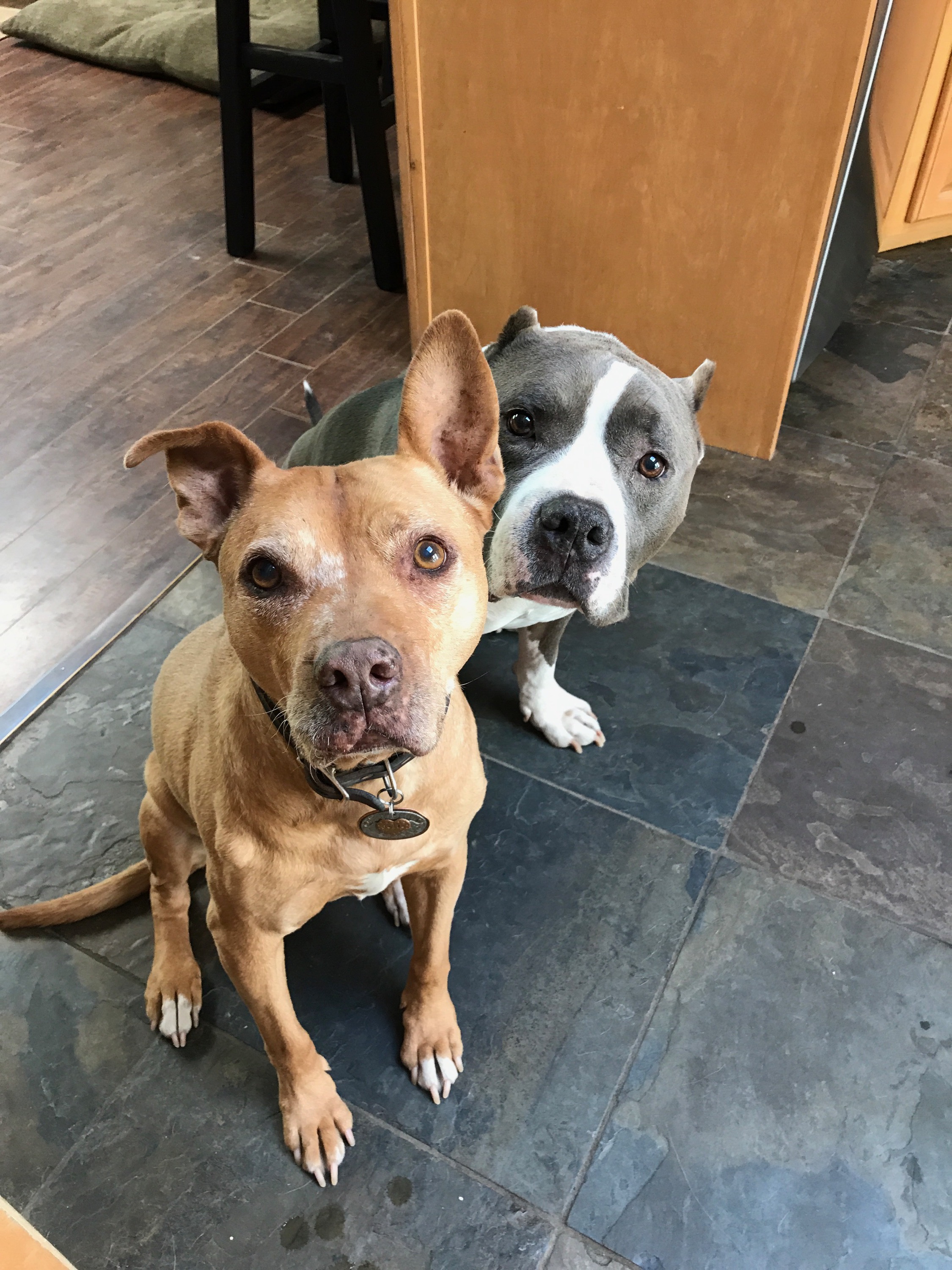 By Sean O'SheaOne of the best ways to create an anxious, hyped-up, destructive, barking, whining, howling, crate-breaking, separation anxiety filled dog, is to share an effusive goodbye.Even when you leave without fanfare, it's already hard on your dog. They're likely already somewhat worried and concerned...worked up emotionally.So the last thing you want to do is make something that's already difficult for your dog...a thousand times worse.The tendency for us is to want to connect and communicate to our dogs. We want them to know we love them. That we're coming back. That we're sorry. That everything will be okay.And that's exactly how you make everything not okay.Even though the intention is 100% positive, the actual outcome for the dog is the opposite. They're left feeling confused, worked up, excited, emotionally stimulated. And then - you leave.Then they're left with all the emotional elevation, and nowhere to put it. The contrast, from what you just shared, to what they're now left with is enormous. And that energy and stimulation you created has to go somewhere. So it goes into all the negative stuff I described above.You basically leave your dog holding the emotional bag. Your intentions were to calm and soothe, but what they created was suffering and overwhelm.I know that's not what you want. And it's not what your dog wants either. Trust me.If you really want to help your dog feel better. If you really want your dog to not worry. If you really want you dog to relax while you're away, then don't load them up with physical and emotional juice prior to leaving. Just leave. Just make it as normal and non-eventful as possible. Just be neutral. Just go.Understand that what you're trying to convey isn't landing the way you want, and it certainly isn't creating the positive, comforting reaction you desire. Understand that if your heart is wanting you to reach out and soothe, make sure your brain overrides it. Understand that as connected as we are, certain communications get severely lost in translation.Even though your human heart may feel cold and uncaring by just leaving, your dog won't receive it like that. His or her feelings won't be hurt, they won't think you don't love them, and they won't hold an emotional grudge. On the contrary, you'll actually be helping them. Helping them to feel more comfort, more calm, more relaxation, and more acceptance of your departure.And that's what you really want. :)
By Sean O'SheaOne of the best ways to create an anxious, hyped-up, destructive, barking, whining, howling, crate-breaking, separation anxiety filled dog, is to share an effusive goodbye.Even when you leave without fanfare, it's already hard on your dog. They're likely already somewhat worried and concerned...worked up emotionally.So the last thing you want to do is make something that's already difficult for your dog...a thousand times worse.The tendency for us is to want to connect and communicate to our dogs. We want them to know we love them. That we're coming back. That we're sorry. That everything will be okay.And that's exactly how you make everything not okay.Even though the intention is 100% positive, the actual outcome for the dog is the opposite. They're left feeling confused, worked up, excited, emotionally stimulated. And then - you leave.Then they're left with all the emotional elevation, and nowhere to put it. The contrast, from what you just shared, to what they're now left with is enormous. And that energy and stimulation you created has to go somewhere. So it goes into all the negative stuff I described above.You basically leave your dog holding the emotional bag. Your intentions were to calm and soothe, but what they created was suffering and overwhelm.I know that's not what you want. And it's not what your dog wants either. Trust me.If you really want to help your dog feel better. If you really want your dog to not worry. If you really want you dog to relax while you're away, then don't load them up with physical and emotional juice prior to leaving. Just leave. Just make it as normal and non-eventful as possible. Just be neutral. Just go.Understand that what you're trying to convey isn't landing the way you want, and it certainly isn't creating the positive, comforting reaction you desire. Understand that if your heart is wanting you to reach out and soothe, make sure your brain overrides it. Understand that as connected as we are, certain communications get severely lost in translation.Even though your human heart may feel cold and uncaring by just leaving, your dog won't receive it like that. His or her feelings won't be hurt, they won't think you don't love them, and they won't hold an emotional grudge. On the contrary, you'll actually be helping them. Helping them to feel more comfort, more calm, more relaxation, and more acceptance of your departure.And that's what you really want. :)



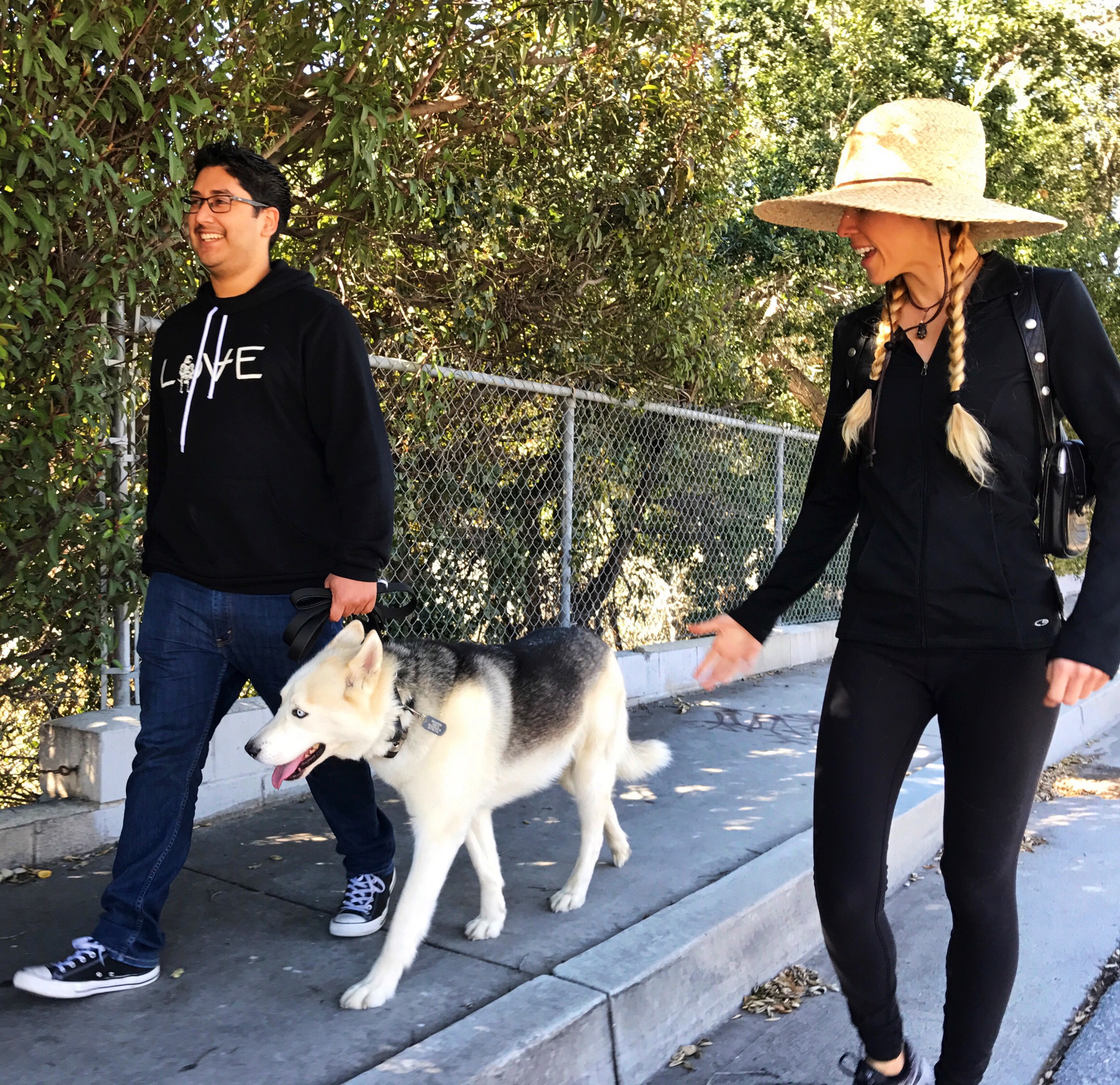
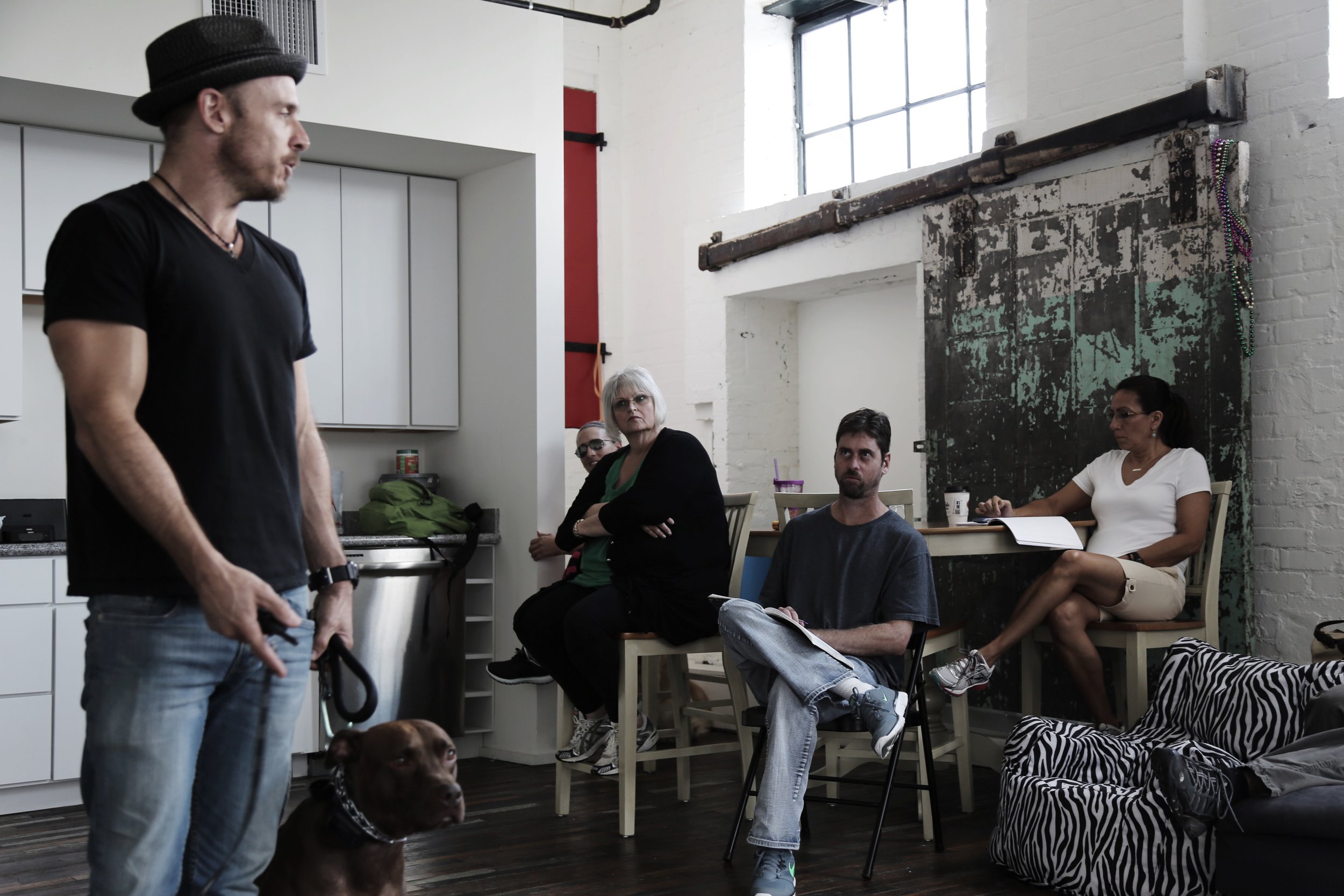 By Sean O'SheaWhat most folks don't get, is that everything with your dog is connected. Every allowance or permissive moment, opens the door for another, seemingly unrelated behavior. They don't realize that over-indulging your dog with love, freedom, and tons of unearned affection, creates perceptions about you that can lead to other issues. That everything you do or don't do is giving your dog information about who you are and how he should respond to you. That you're constantly dropping clues to your dog about what opportunities are available, as well as creating openings for instability.When your relationship with your dog is lopsided, unbalanced, and based far more on "love" and spoiling than it is rules and structure, you're going to have problems. (I think we all get that by now.) But the interesting part is that you never know how that information of permissiveness, allowance, and lack of accountability will show itself.You think the spoiling might lead to begging or barking at you, but instead it leads to resource guarding. You think that allowing the pulling on the walk might lead to barking at other dogs, but instead it leads to growling and snapping at guests in the house. You think allowing jumping, barking, and craziness in the house will just lead to bad manners, but instead it leads to separation anxiety.While the origins of these serious issues might seem dramatic and improbable, I can assure you we've seen them all in action. We've seen relationship gaps create what seem to be amazingly disconnected issues. The thing is, you don't get to choose how your behavior (or lack of) affects your dog's. You don't know what's going to come out the other end of a relationship that's short on leadership, rules, and accountability, and long on chaos and permissiveness.Oftentimes it makes clear sense. The behavior you think you're possibly creating (and are ok with) is what you get. But just as often it's not. Often the dog's individual psychological makeup and personality create an outcome you'd think was totally unrelated. But what happens is, your dog's personal insecurities, temperament, genetics, and attitude become a giant mixer - a mixer that combines with what you add to it. You both add your parts, stir them up with daily life and repetition, and voila, you get some nasty behavior that SEEMS totally unrelated. But it's not.We see so many dogs with gigantic laundry lists of issues. From annoying stuff to super dangerous. And the funny thing is, our program almost never changes. But all these dogs, with all these different issues, using the same program, transform. Do we sometimes need specific protocols for specific issues? Of course. But by and large, a simple program of believable leadership, non-negotiable rules, dependable structure, and accountability for poor choices are what make 95% of the changes.Do you know how many resource guarders stop guarding once they experience a few rules totally unrelated to their guarding? Or how many territorial guys stop being territorial once believable leadership is in place? Or how many separation anxiety dogs relax and stop freaking out once they learn that structure, rules, and accountability are prioritized over freedom and affection?Leadership gaps, rule gaps, structure gaps, accountability gaps - accompanied by permissiveness, affection, and freedom are the perfect recipe to create all manner of dog behavior problems. The thing is, you never know which ones.
By Sean O'SheaWhat most folks don't get, is that everything with your dog is connected. Every allowance or permissive moment, opens the door for another, seemingly unrelated behavior. They don't realize that over-indulging your dog with love, freedom, and tons of unearned affection, creates perceptions about you that can lead to other issues. That everything you do or don't do is giving your dog information about who you are and how he should respond to you. That you're constantly dropping clues to your dog about what opportunities are available, as well as creating openings for instability.When your relationship with your dog is lopsided, unbalanced, and based far more on "love" and spoiling than it is rules and structure, you're going to have problems. (I think we all get that by now.) But the interesting part is that you never know how that information of permissiveness, allowance, and lack of accountability will show itself.You think the spoiling might lead to begging or barking at you, but instead it leads to resource guarding. You think that allowing the pulling on the walk might lead to barking at other dogs, but instead it leads to growling and snapping at guests in the house. You think allowing jumping, barking, and craziness in the house will just lead to bad manners, but instead it leads to separation anxiety.While the origins of these serious issues might seem dramatic and improbable, I can assure you we've seen them all in action. We've seen relationship gaps create what seem to be amazingly disconnected issues. The thing is, you don't get to choose how your behavior (or lack of) affects your dog's. You don't know what's going to come out the other end of a relationship that's short on leadership, rules, and accountability, and long on chaos and permissiveness.Oftentimes it makes clear sense. The behavior you think you're possibly creating (and are ok with) is what you get. But just as often it's not. Often the dog's individual psychological makeup and personality create an outcome you'd think was totally unrelated. But what happens is, your dog's personal insecurities, temperament, genetics, and attitude become a giant mixer - a mixer that combines with what you add to it. You both add your parts, stir them up with daily life and repetition, and voila, you get some nasty behavior that SEEMS totally unrelated. But it's not.We see so many dogs with gigantic laundry lists of issues. From annoying stuff to super dangerous. And the funny thing is, our program almost never changes. But all these dogs, with all these different issues, using the same program, transform. Do we sometimes need specific protocols for specific issues? Of course. But by and large, a simple program of believable leadership, non-negotiable rules, dependable structure, and accountability for poor choices are what make 95% of the changes.Do you know how many resource guarders stop guarding once they experience a few rules totally unrelated to their guarding? Or how many territorial guys stop being territorial once believable leadership is in place? Or how many separation anxiety dogs relax and stop freaking out once they learn that structure, rules, and accountability are prioritized over freedom and affection?Leadership gaps, rule gaps, structure gaps, accountability gaps - accompanied by permissiveness, affection, and freedom are the perfect recipe to create all manner of dog behavior problems. The thing is, you never know which ones.
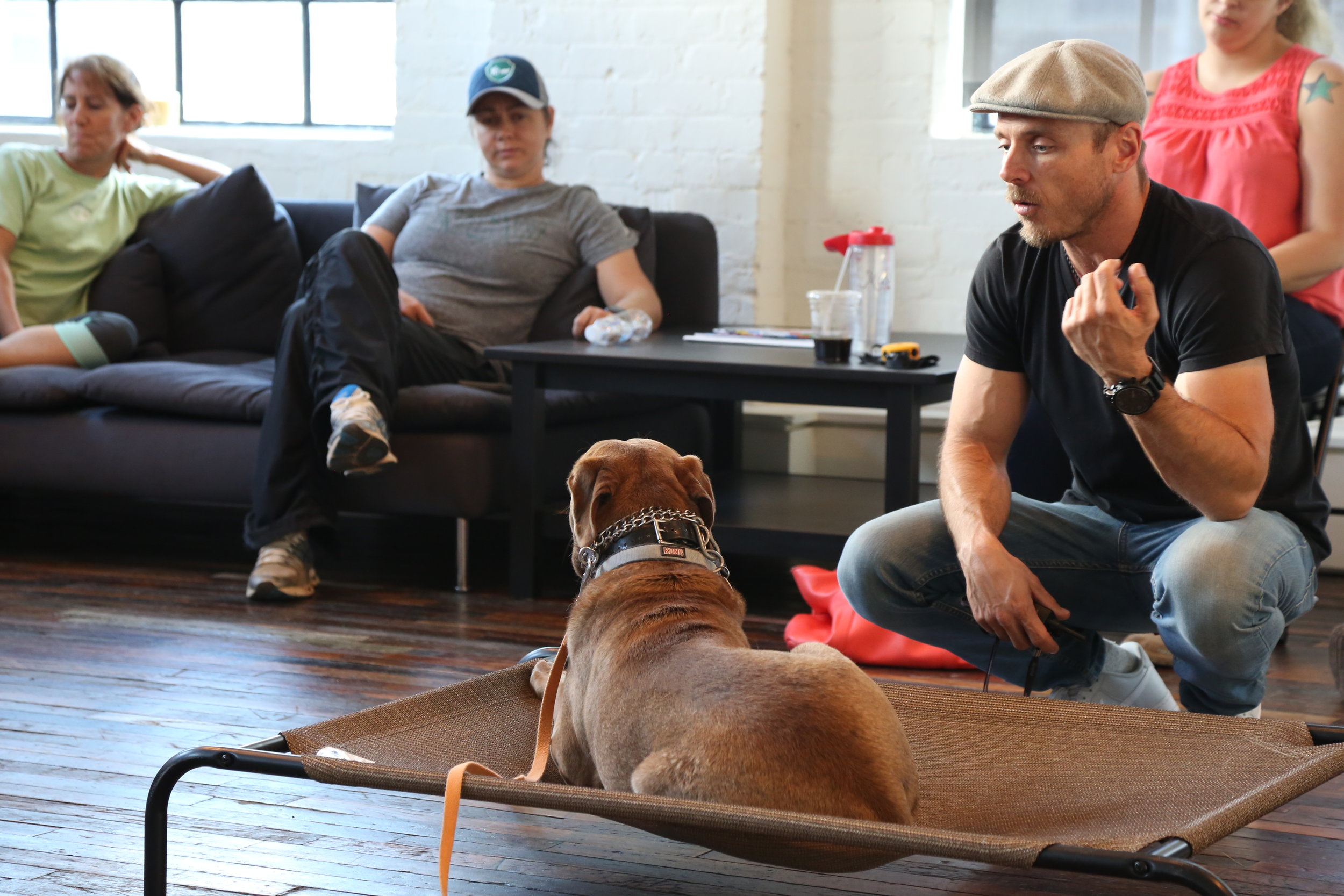 By Sean O'SheaRelationships are real things. You and your dog have one. It might be healthy, balanced, and awesome, or it might be toxic, disrespectful, and disheartening. Or maybe it's somewhere in-between. Whatever it is, it's been built by your interactions. What you've allowed. What you haven't allowed. What you've asked for. What you've reinforced. Who you've been and how you've behaved.Everything you've done has been information your dog has used to determine your relationship. All this information has told your dog who you are and what role you wish to play in his life. It's also informed him about the rules of life. What is and isn't okay, what is and isn't expected. It's created the framework your dog makes all his decisions from.While trainers can teach your dog commands, manners, and what is and isn't acceptable behavior, your dog is simply too smart and too emotionally evolved to take that information as universal. Just like you know who means business and who doesn't in your own life, so does your dog. Eventually, if you don't keep up the work, if you start to slack, your dog will see the cracks. He'll realize there's two sets of rules: the ones he knows, and the ones you actually enforce. And he'll choose the latter. Not because he's a bad dog, but because he's opportunistic...just like you and me.Like us, when authority and rules are foggy, or not consistently enforced, we tend to take advantage of them. Whether we like to admit it or not, it's always consequences - or the possibility of them - that tends to keep us on our best behavior. The more predictable and dependable, the better our behavior tends to be. And of course, the less predictable and dependable, the worse our behavior tends to be.Our dogs are reading us. All the time. What are we enforcing, what are we allowing? They're taking this information and deciding what needs to be adhered to and what doesn't, who needs to be listened to and who doesn't. If you ask for less than what the trainer asked, you'll get less. If you ask the same, you'll get the same. It's in these moments that you create your relationship dynamics.And while us trainers can build the foundation for the new, more healthy patterns and choices to stand on, it's only you - the person your dog lives with, the person who enforces the rules, structure, and expectations daily - that can make these changes permanent.We can only give you the tools to start you on the path, we can't build the relationship. That part, the hard part, is up to you. Your dog is too smart to have it any other way.
By Sean O'SheaRelationships are real things. You and your dog have one. It might be healthy, balanced, and awesome, or it might be toxic, disrespectful, and disheartening. Or maybe it's somewhere in-between. Whatever it is, it's been built by your interactions. What you've allowed. What you haven't allowed. What you've asked for. What you've reinforced. Who you've been and how you've behaved.Everything you've done has been information your dog has used to determine your relationship. All this information has told your dog who you are and what role you wish to play in his life. It's also informed him about the rules of life. What is and isn't okay, what is and isn't expected. It's created the framework your dog makes all his decisions from.While trainers can teach your dog commands, manners, and what is and isn't acceptable behavior, your dog is simply too smart and too emotionally evolved to take that information as universal. Just like you know who means business and who doesn't in your own life, so does your dog. Eventually, if you don't keep up the work, if you start to slack, your dog will see the cracks. He'll realize there's two sets of rules: the ones he knows, and the ones you actually enforce. And he'll choose the latter. Not because he's a bad dog, but because he's opportunistic...just like you and me.Like us, when authority and rules are foggy, or not consistently enforced, we tend to take advantage of them. Whether we like to admit it or not, it's always consequences - or the possibility of them - that tends to keep us on our best behavior. The more predictable and dependable, the better our behavior tends to be. And of course, the less predictable and dependable, the worse our behavior tends to be.Our dogs are reading us. All the time. What are we enforcing, what are we allowing? They're taking this information and deciding what needs to be adhered to and what doesn't, who needs to be listened to and who doesn't. If you ask for less than what the trainer asked, you'll get less. If you ask the same, you'll get the same. It's in these moments that you create your relationship dynamics.And while us trainers can build the foundation for the new, more healthy patterns and choices to stand on, it's only you - the person your dog lives with, the person who enforces the rules, structure, and expectations daily - that can make these changes permanent.We can only give you the tools to start you on the path, we can't build the relationship. That part, the hard part, is up to you. Your dog is too smart to have it any other way.
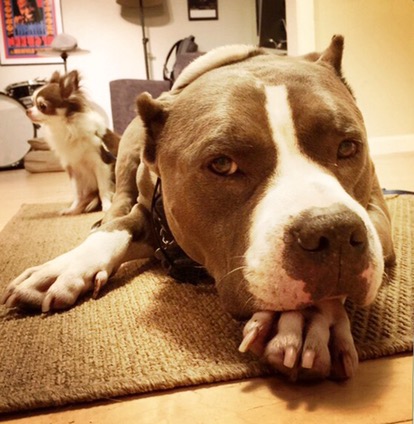
 By Sean O'Shea1) Thou shall only pet, soothe, and share soft energy with a dog when they are in a healthy and positive state of mind. We learned in
By Sean O'Shea1) Thou shall only pet, soothe, and share soft energy with a dog when they are in a healthy and positive state of mind. We learned in 
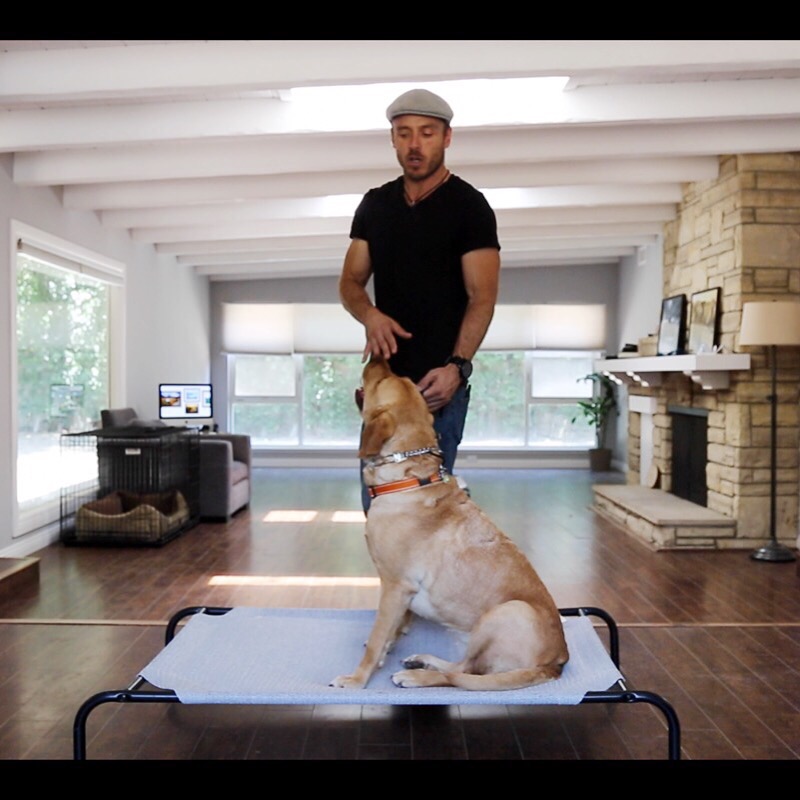


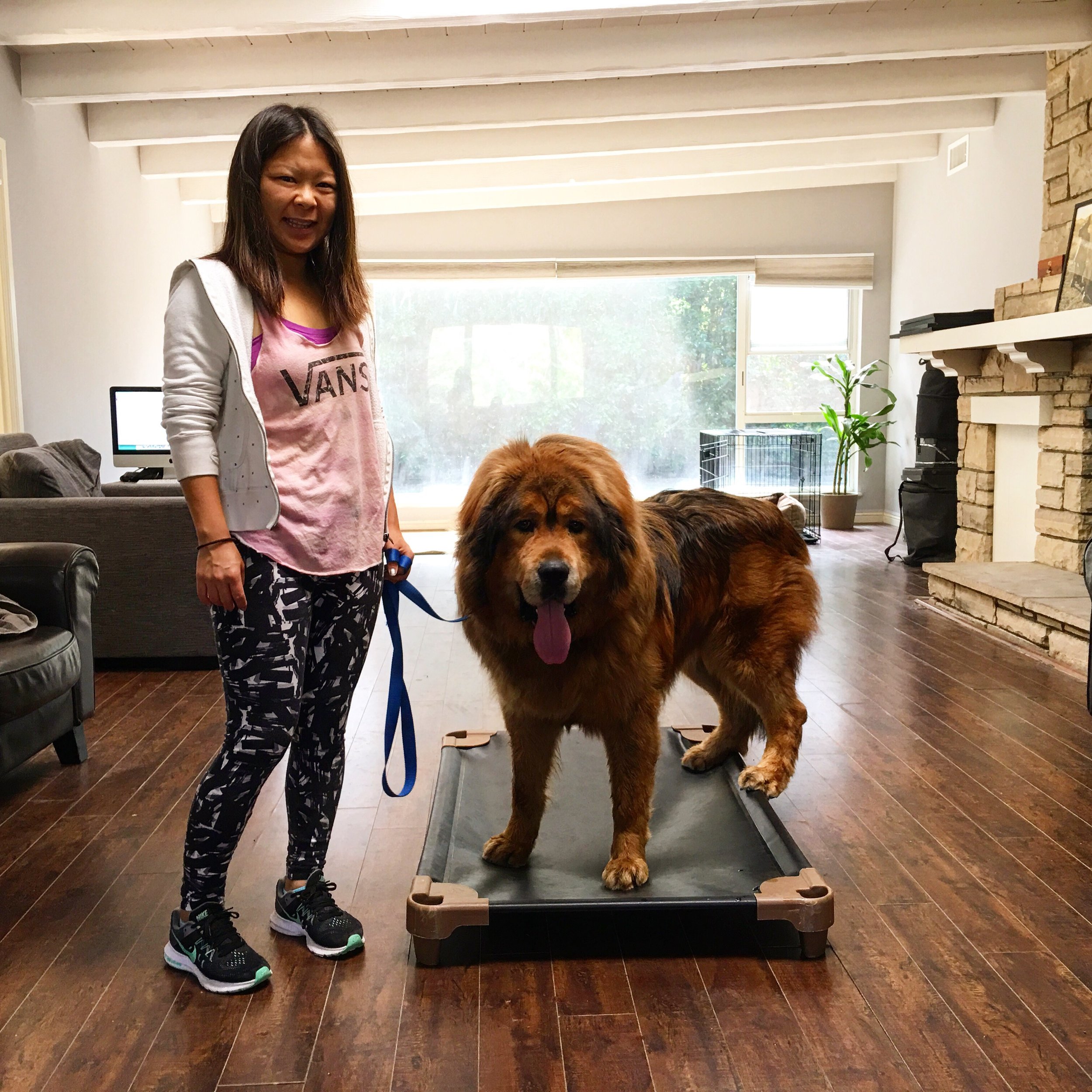
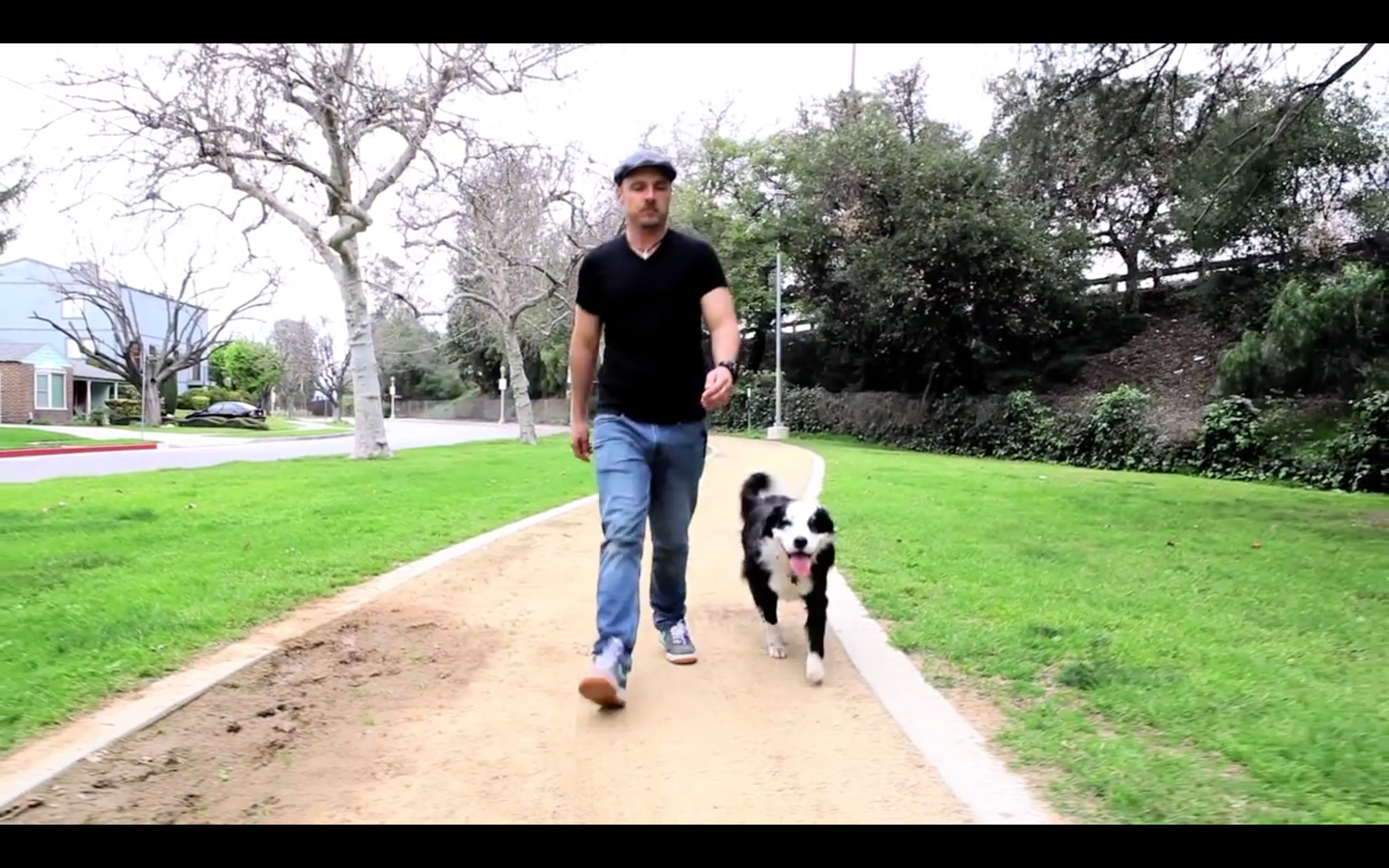
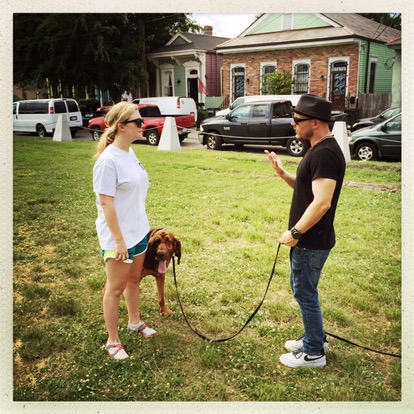
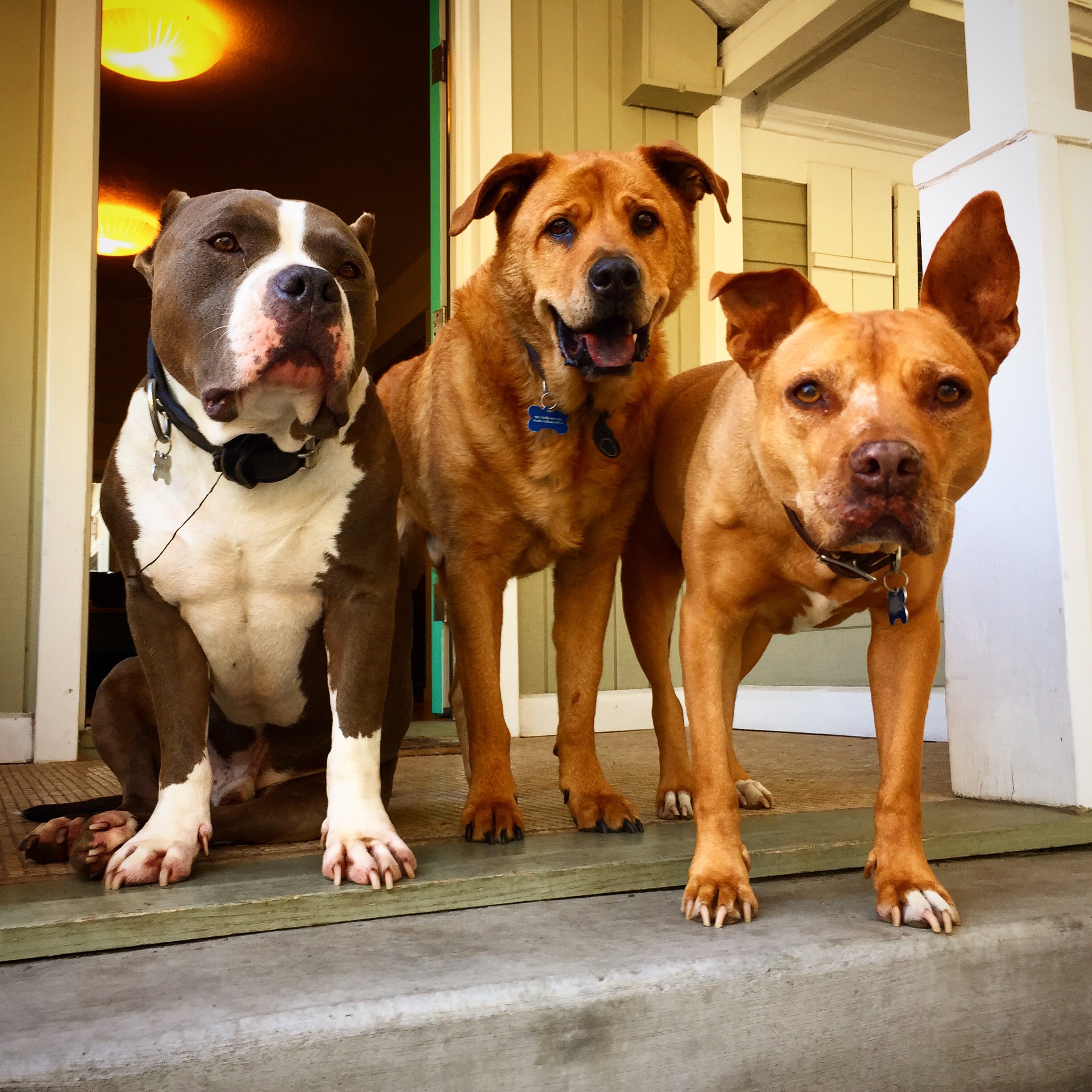

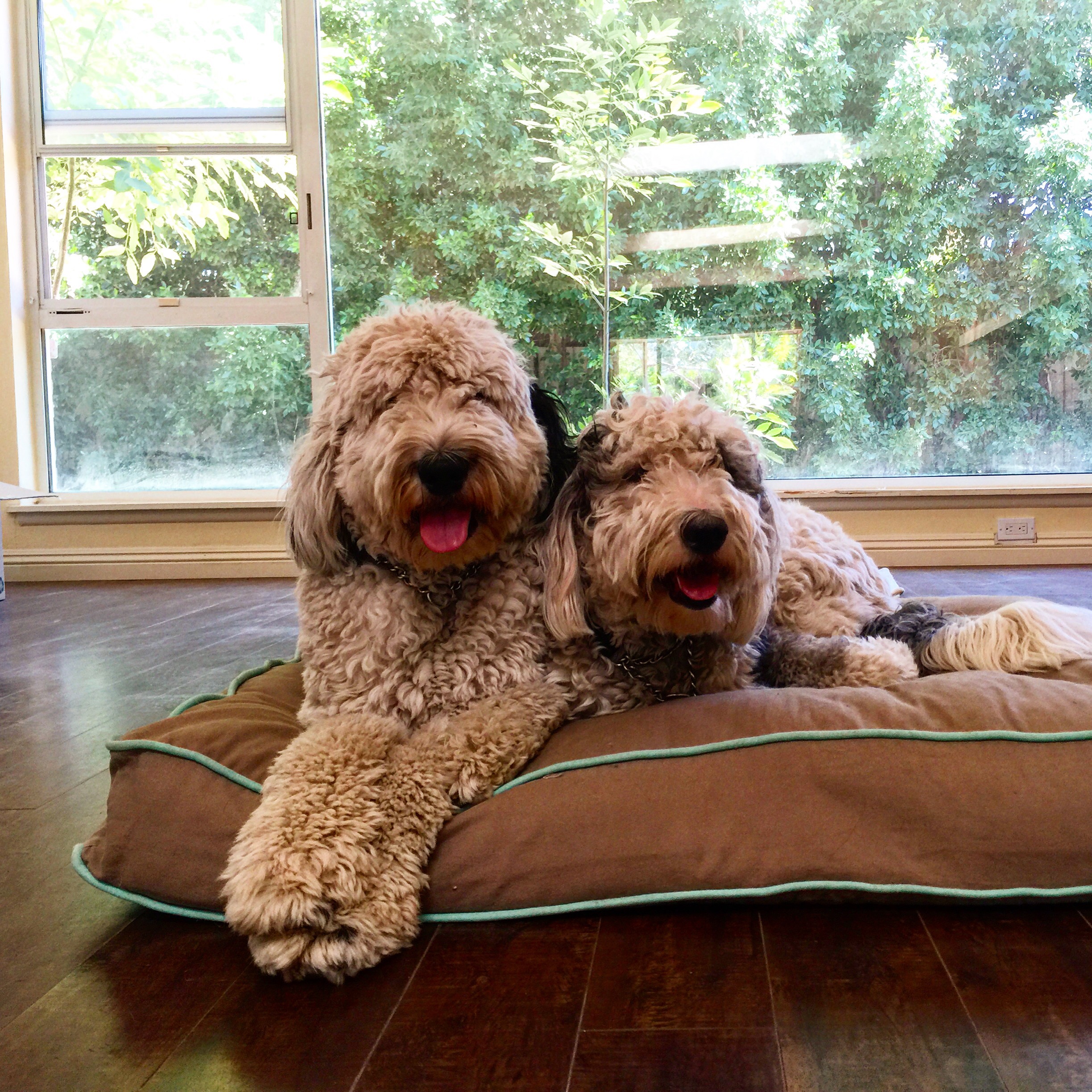
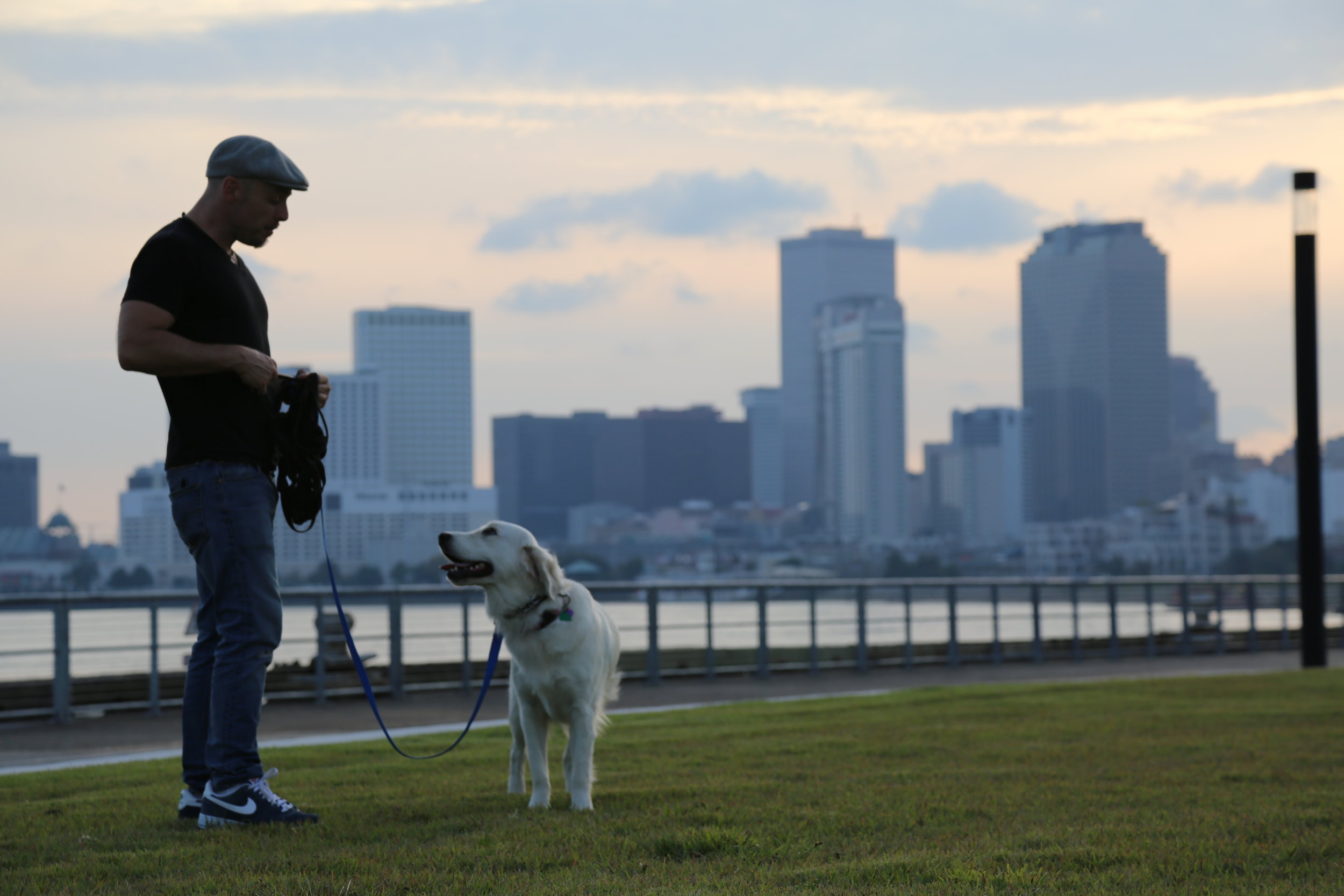 By Sean O'SheaWhat's the hardest thing for both owners and trainers? It's the power of association, emotional habits, perceptions, and feelings. All the stuff owners have accidentally or inadvertently created between their dogs, themselves, and their environments.Watching well-trained, calm, and obedient dogs literally become different animals - reactive, aggressive, crazed, freaked out, incapable of listening etc - right before your eyes as the owner enters the room, grabs the leash, or returns the dog home is something that never ceases to amaze and confound.It's the one thing we can't control. Even with owners doing their homework, having the tools and commands down pat, and showing up ready to change it all, it's still the wildcard in play. For many dogs it's a seamless transition - they jump right into the new game. For others, it's a totally different story. These dogs are so affected by the relationship/associations/feelings they have with their owners that their minds and nervous systems simply meltdown.They are so aroused, excited, overwhelmed, over-stimulated, and most of all, reconnected to their past feelings (dependency, guarding, fear, anxiety, excitement, possessiveness etc) that they're completely different dogs. They don't respond to commands. They don't care about the tools. They react when they didn't react. They explode when they previously didn't care. The just-minutes-ago calm, and well mannered dog, disappears in an instant! They actually engage in physical ticks and behaviors (rolling on the ground, scratching, licking, spinning, whining etc) to try to channel out some of this toxic remembrance and association.This is the power of relationship and association. Dogs not only get into behavioral patterns, they also get into emotional, and physiological (secretions of stress hormones) patterns. They actually feel emotionally different, and physically different around their owners and environments. To be successful with these guys, it's not just about training new behaviors and habits, no, we're talking about needing to actually reprogram the emotions and the body of these dogs.To be successful, these dogs need to actually FEEL different in their owner's presence and in their home environments. And this is the Mt Everest that these owners have to climb, if they want their dogs to be safe, polite, relaxed, and well-behaved. These owners have work ahead of them that many aren't going to be down for, simply because it's too hard, too exhausting, and takes too much perseverance. It's not your usual dog training hand over, it's something totally different. It's human and dog reboot time. World Series version.This was me with my two dogs, Oakley and Junior. It took me fighting and wanting it so bad, for over a year and a half to get them to finally reset. We had SO many negative, toxic associations and feelings, that the only fix was tons of time and tons of effort. Daily battle, of me wanting this and being unwilling to give it up unrealized. It was messy, and it was far from pretty, but we got there. Finally.For other owners who find themselves in this position, I can tell you that what you want is definitely possible, but I can also assure that it can be an incredibly hard, and long road. And only those who want it bad enough to go out day after day and earn back a new relationship, create new associations, and develop new feelings will get it. It will be hard, it will be uncomfortable, it will often feel hopeless, and it might even be embarrassing, but that's the required exchange if you find you and your dog in this predicament, and you want to find your way back out.P.S. Yes this is about training, tools, commands, rules, structure, and accountability, but even more so it's about the inner resolve to become the person you need to be daily, in every moment, to create these lasting changes in your dog's perception of you.
By Sean O'SheaWhat's the hardest thing for both owners and trainers? It's the power of association, emotional habits, perceptions, and feelings. All the stuff owners have accidentally or inadvertently created between their dogs, themselves, and their environments.Watching well-trained, calm, and obedient dogs literally become different animals - reactive, aggressive, crazed, freaked out, incapable of listening etc - right before your eyes as the owner enters the room, grabs the leash, or returns the dog home is something that never ceases to amaze and confound.It's the one thing we can't control. Even with owners doing their homework, having the tools and commands down pat, and showing up ready to change it all, it's still the wildcard in play. For many dogs it's a seamless transition - they jump right into the new game. For others, it's a totally different story. These dogs are so affected by the relationship/associations/feelings they have with their owners that their minds and nervous systems simply meltdown.They are so aroused, excited, overwhelmed, over-stimulated, and most of all, reconnected to their past feelings (dependency, guarding, fear, anxiety, excitement, possessiveness etc) that they're completely different dogs. They don't respond to commands. They don't care about the tools. They react when they didn't react. They explode when they previously didn't care. The just-minutes-ago calm, and well mannered dog, disappears in an instant! They actually engage in physical ticks and behaviors (rolling on the ground, scratching, licking, spinning, whining etc) to try to channel out some of this toxic remembrance and association.This is the power of relationship and association. Dogs not only get into behavioral patterns, they also get into emotional, and physiological (secretions of stress hormones) patterns. They actually feel emotionally different, and physically different around their owners and environments. To be successful with these guys, it's not just about training new behaviors and habits, no, we're talking about needing to actually reprogram the emotions and the body of these dogs.To be successful, these dogs need to actually FEEL different in their owner's presence and in their home environments. And this is the Mt Everest that these owners have to climb, if they want their dogs to be safe, polite, relaxed, and well-behaved. These owners have work ahead of them that many aren't going to be down for, simply because it's too hard, too exhausting, and takes too much perseverance. It's not your usual dog training hand over, it's something totally different. It's human and dog reboot time. World Series version.This was me with my two dogs, Oakley and Junior. It took me fighting and wanting it so bad, for over a year and a half to get them to finally reset. We had SO many negative, toxic associations and feelings, that the only fix was tons of time and tons of effort. Daily battle, of me wanting this and being unwilling to give it up unrealized. It was messy, and it was far from pretty, but we got there. Finally.For other owners who find themselves in this position, I can tell you that what you want is definitely possible, but I can also assure that it can be an incredibly hard, and long road. And only those who want it bad enough to go out day after day and earn back a new relationship, create new associations, and develop new feelings will get it. It will be hard, it will be uncomfortable, it will often feel hopeless, and it might even be embarrassing, but that's the required exchange if you find you and your dog in this predicament, and you want to find your way back out.P.S. Yes this is about training, tools, commands, rules, structure, and accountability, but even more so it's about the inner resolve to become the person you need to be daily, in every moment, to create these lasting changes in your dog's perception of you.
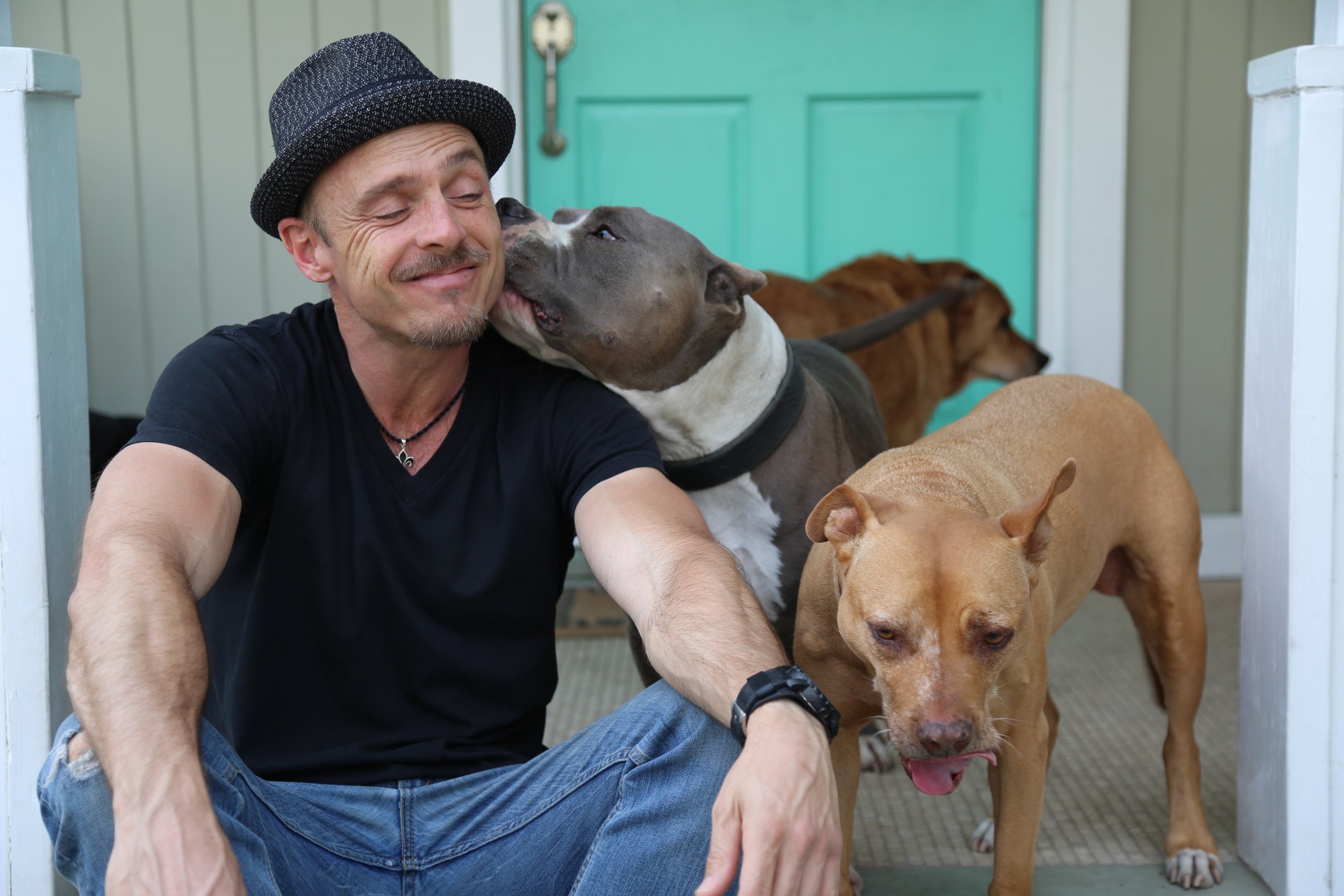
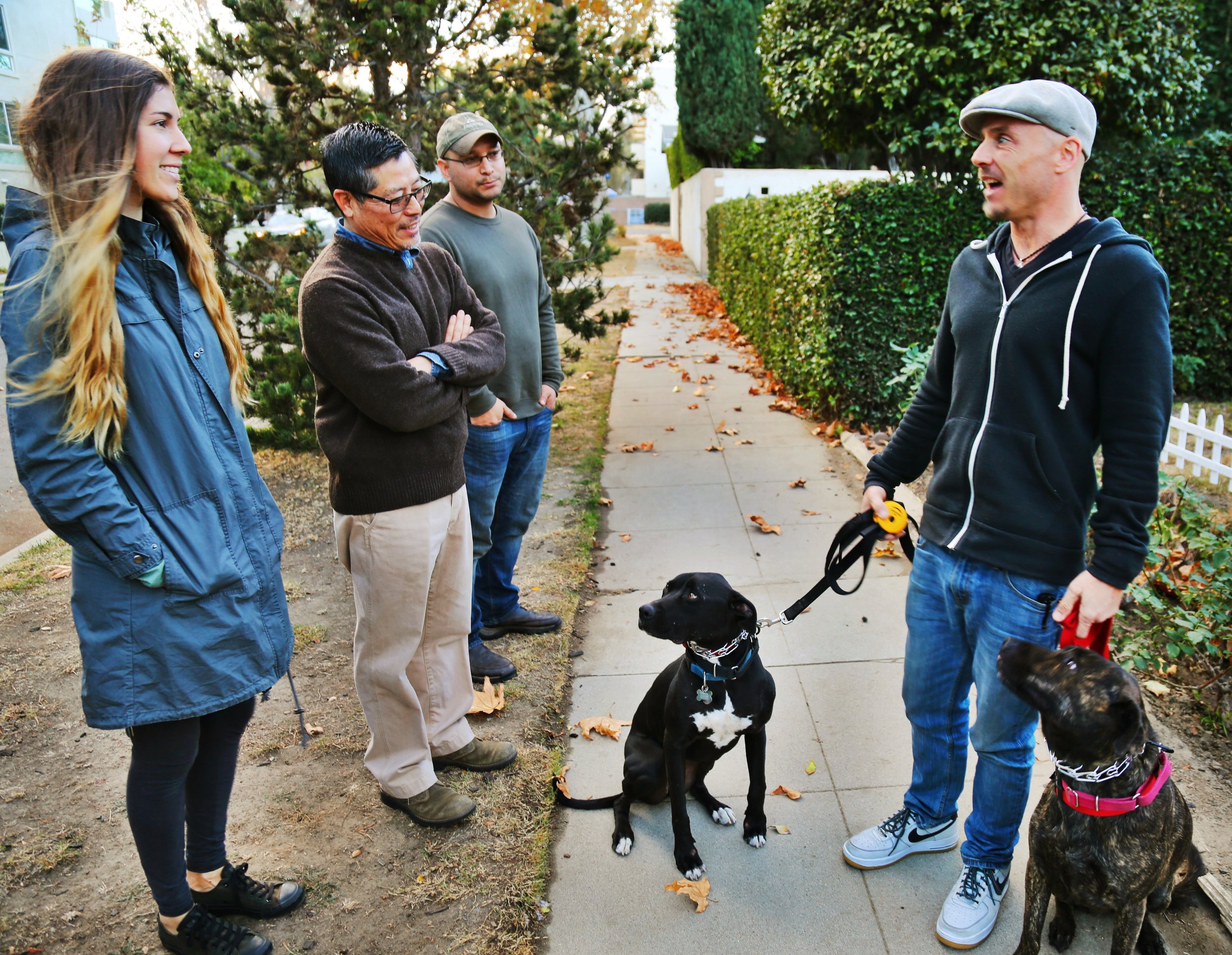
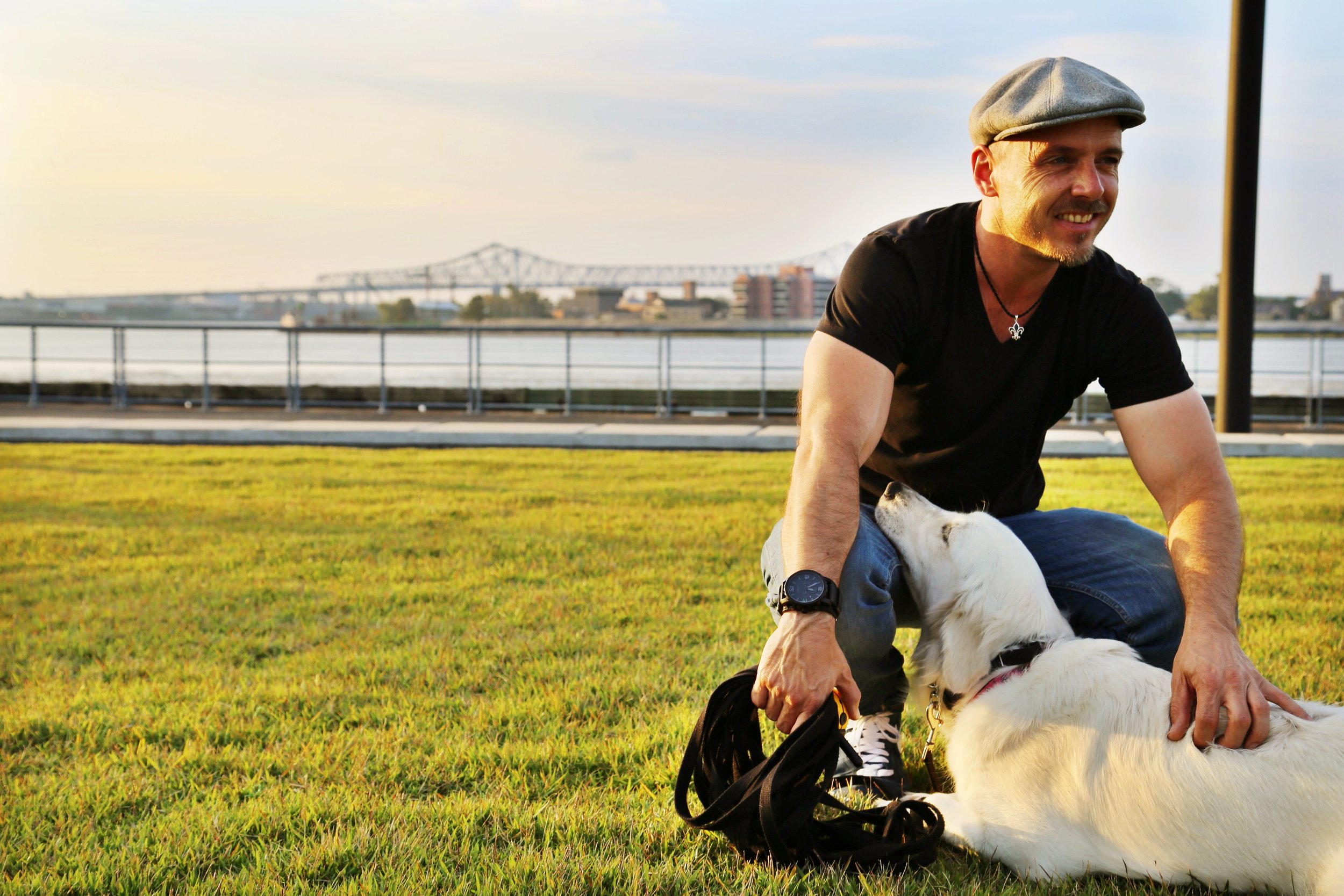 By Sean O'Shea
By Sean O'Shea
